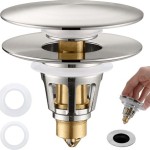What Is A Carbon Sink?
A carbon sink is a natural or artificial reservoir that absorbs more carbon than it releases. Carbon sinks play a critical role in regulating the Earth's climate by absorbing carbon dioxide (CO2) from the atmosphere and storing it in various forms, such as biomass, soil, and the ocean.
Natural carbon sinks include forests, oceans, wetlands, and grasslands. Forests, in particular, act as significant carbon sinks due to their ability to absorb CO2 through photosynthesis and store it in their trunks, branches, and leaves. Oceans absorb CO2 through various processes, including the dissolution of CO2 in seawater and the formation of carbonate minerals by marine organisms.
Artificial carbon sinks are human-created systems designed to capture and store CO2. These include carbon capture and storage (CCS) technologies, which involve capturing CO2 from industrial processes or the atmosphere and storing it underground or in geological formations.
The importance of carbon sinks cannot be overstated. They help to mitigate climate change by reducing the amount of CO2 in the atmosphere, which in turn reduces the greenhouse effect and slows down global warming. Maintaining and enhancing carbon sinks is therefore essential for achieving climate stabilization and limiting the impacts of climate change.
Types of Carbon Sinks
There are various types of carbon sinks, each with its own unique characteristics and mechanisms for absorbing and storing carbon.
Forests
Forests are major carbon sinks due to their ability to absorb CO2 through photosynthesis. They store carbon in their biomass, including trunks, branches, leaves, and roots. Forests also contribute to carbon sequestration by accumulating organic matter in the soil.
Oceans
Oceans are vast carbon sinks, absorbing CO2 through various processes. CO2 dissolves in seawater, forming carbonic acid. Marine organisms, such as phytoplankton, use CO2 for photosynthesis and convert it into organic matter, which is stored in their shells and tissues. When these organisms die, their remains sink to the ocean floor, forming marine sediments that store carbon for long periods.
Wetlands
Wetlands, including marshes, swamps, and bogs, are valuable carbon sinks due to their ability to accumulate organic matter. Wetland plants, such as reeds and sedges, absorb CO2 and store it in their tissues. Wetlands also have anaerobic conditions that promote the formation of peat, a carbon-rich soil that can store carbon for centuries.
Grasslands
Grasslands, including prairies, steppes, and savannas, contribute to carbon sequestration by storing carbon in their vegetation and soil. Grasses absorb CO2 through photosynthesis and store it in their roots and rhizomes. Grassland soils also accumulate organic matter, further enhancing carbon storage.
Artificial Carbon Sinks
Artificial carbon sinks are human-created systems designed to capture and store CO2. Common methods include:
- Carbon Capture and Storage (CCS): CCS involves capturing CO2 from industrial processes or the atmosphere and storing it underground in geological formations, such as depleted oil and gas reservoirs.
- Bioenergy with Carbon Capture and Storage (BECCS): BECCS combines biomass energy production with CCS. Biomass is burned to generate electricity, while the CO2 produced is captured and stored.
- Direct Air Capture (DAC): DAC involves capturing CO2 directly from the atmosphere using specialized technologies.

Carbon Sink Wikipedia

The Ocean A Carbon Sink Climate Platform

Carbon Sinks And Sources Sopec Sustainable Ohio Public Energy Council

What Is A Carbon Sink And How Do They Protect Our Planet Klima

Carbon Sink Definition Comments

What Are Some Examples Of Carbon Sources And Sinks Socratic

What Are Carbon Sinks And Why They Important In Africa African Climate Reality

Carbon Sinks

Carbon Sinks Powerpoint And Google Slides Template

Landmark Study Indicates Weakening Of Ocean Carbon Sink Noaa Climate Gov







